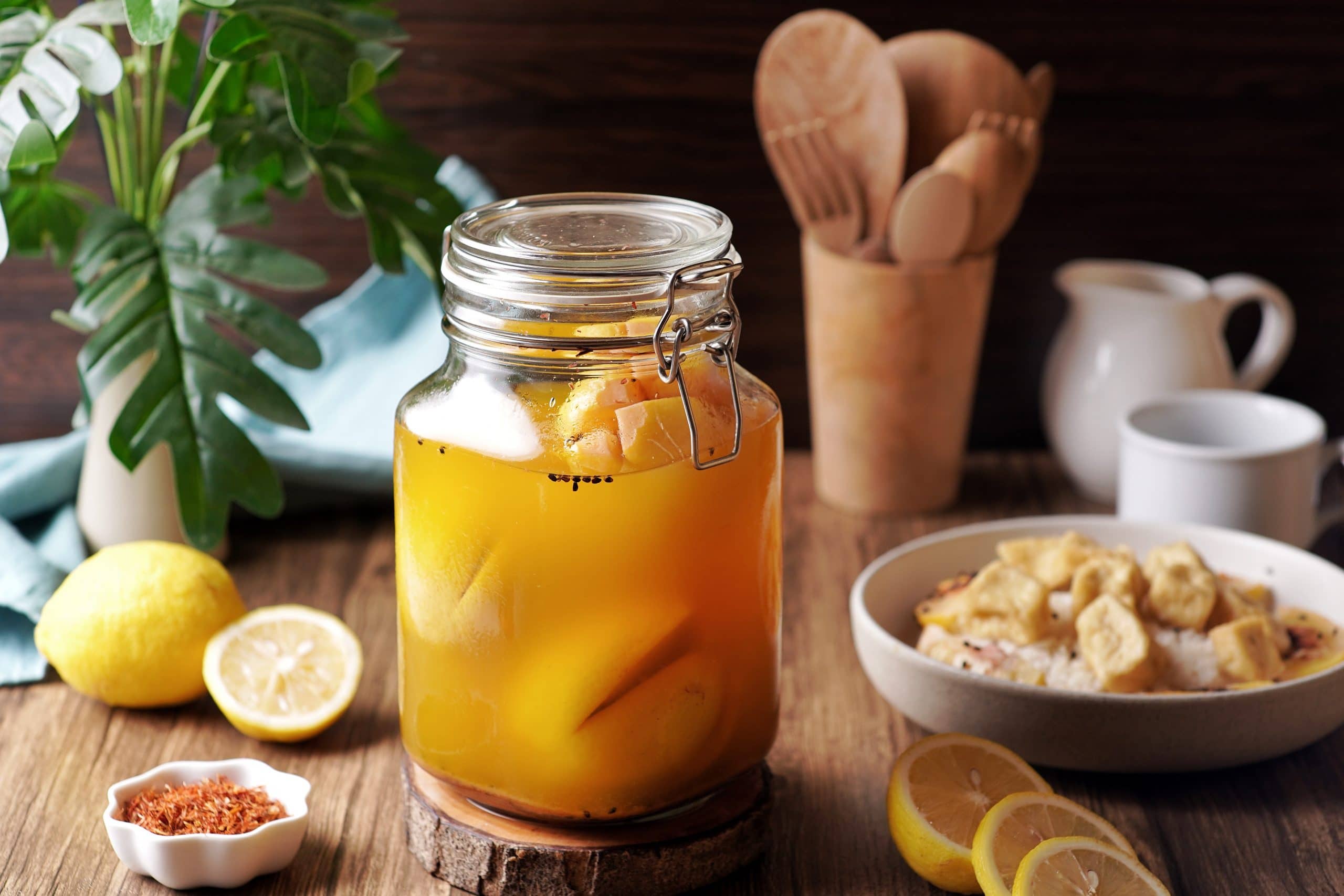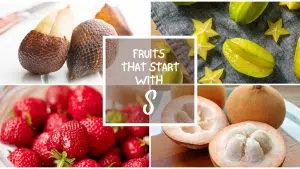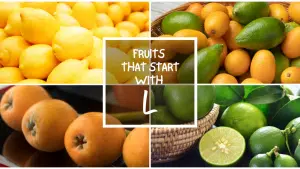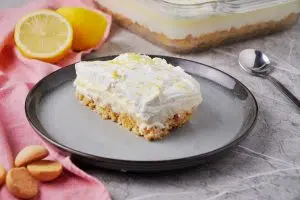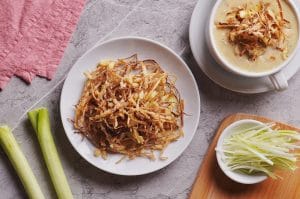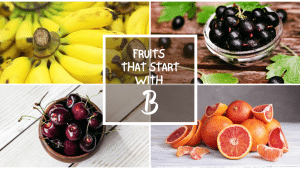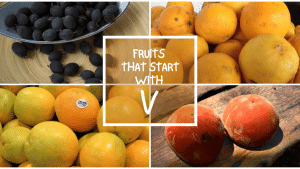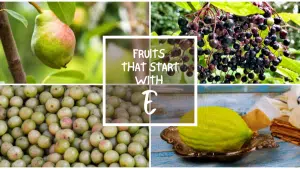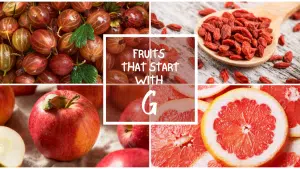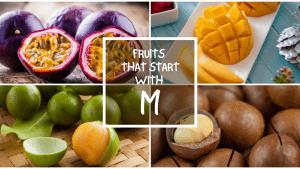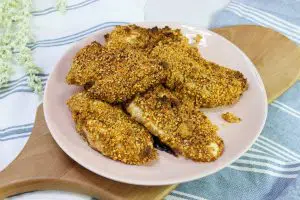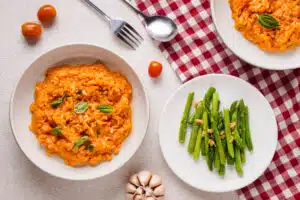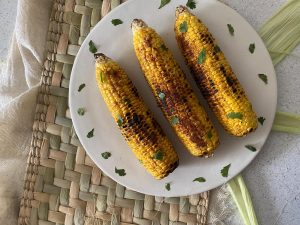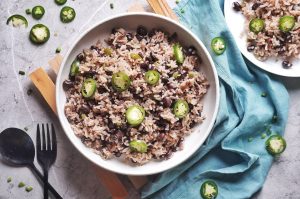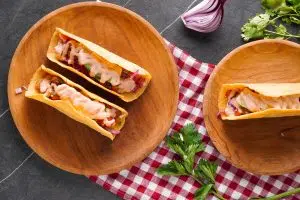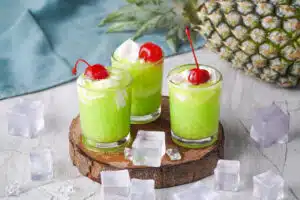Simple Egyptian Preserved Lemons
Important Note: When you buy through our links, we may earn a commission. As an Amazon Associate we earn from qualifying purchases. Content, pricing, offers and availability are subject to change at any time - more info.
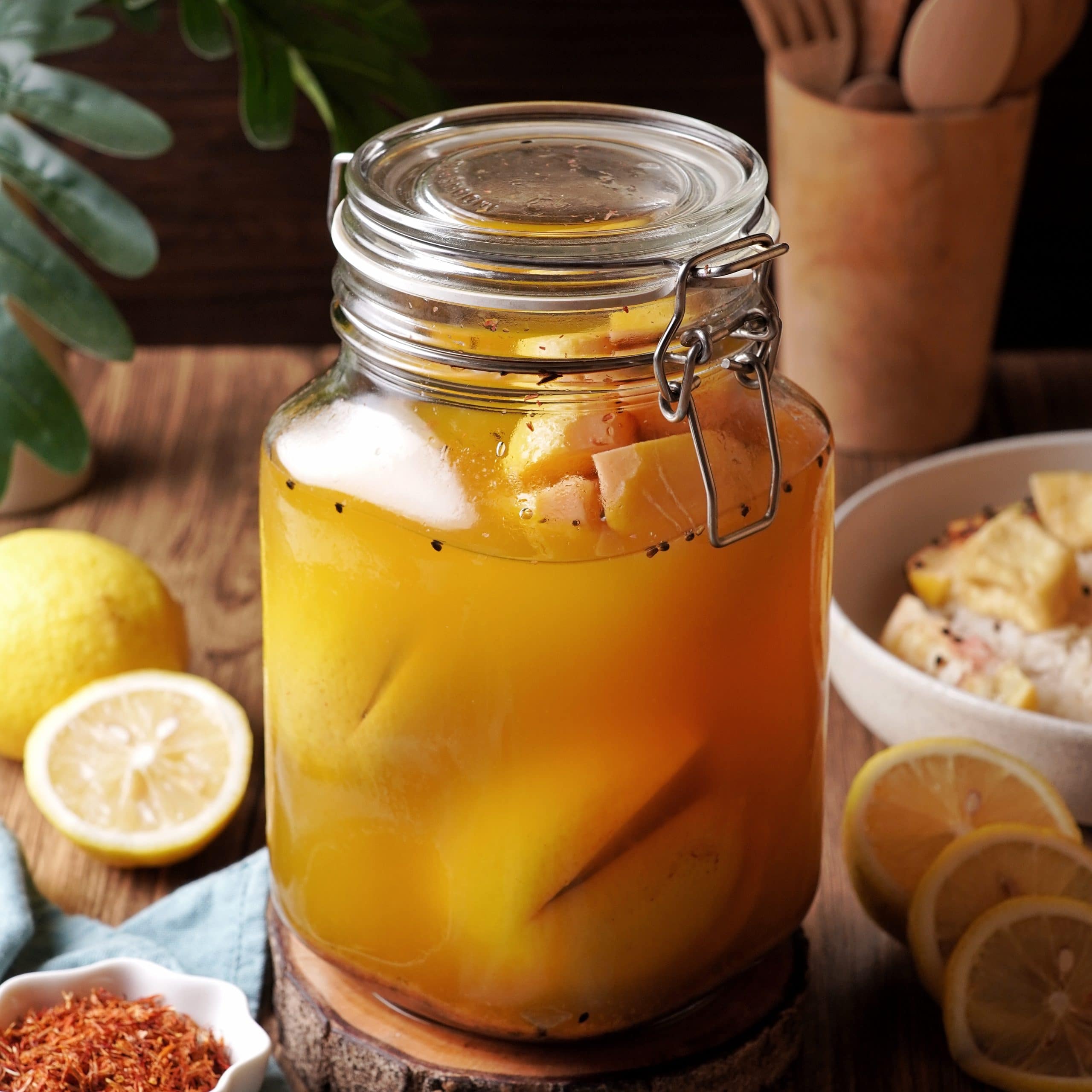
Ingredients
- 1 tbsp + ½ tsp salt
- 5 lemons
- 1 ½ tbsp nigella seeds
- 1 ½ tbsp ground safflower
- water to fill
Instructions
- All ingredients ready? Let's begin!
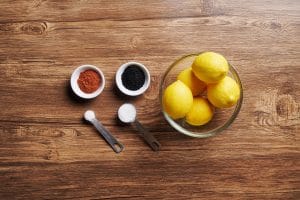
- Remove any produce stickers that might be on the lemons and scrub them clean with soap and water before rinsing. This is so any germs the lemons might have accumulated in the store are removed as well as any possible pesticides used while the lemons were growing.
- Now you need to prep your containers. Ideally you will be using new, clean mason jars.
- Bring 1 cup of water to a boil on the stovetop then add ½ tsp of salt. Dissolve the salt in the water. To be more precise with the fermenting, it would be best to get the weight of your lemons in grams. Multiply weight of lemons by 0.03 to find how many grams of salt you need for a 3% brine (salt and water).
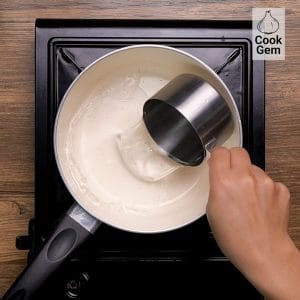
- Pour the salt water into the jar (or jars) you will be using to store the lemons. Leave the water while it cools and set aside.

- Put the lemons in a pot and cover with water. Place over high heat but do not allow it to boil. Remove from heat just before the water boils.

- Being careful not to burn yourself, remove the lemons from the pot and place on a cutting board. Use a sharp knife to cut off the ends of the lemons (the pointy sides).
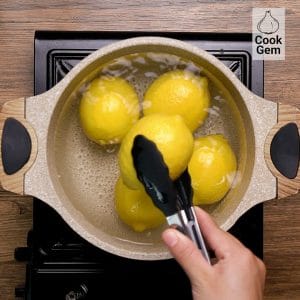
- Here comes the tricky bit! Without cutting all the way through the lemon, cut it into quarters. The best way to do this is by making 4 separate slices that do not go all the way to the middle. Repeat with the rest of the lemons.
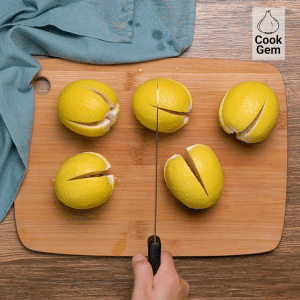
- Mix together the nigella seeds, safflower, and 1 tbsp of salt in a small bowl.
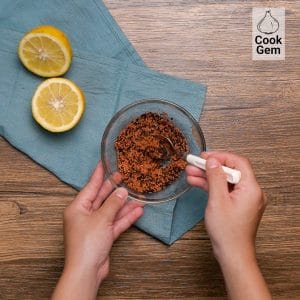
- Rub the safflower mix into the open lemons before stuffing the lemons into your prepared jaw (or jars). If you have any safflower mix left, add it to the jar too.
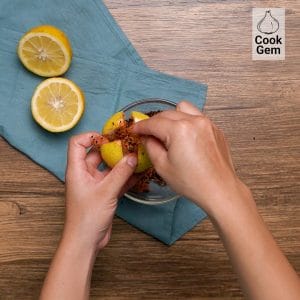
- Add more water if needed, and add a couple more tablespoons of salt to the top if you do. The top of the water should be entirely covering the top of the lemons. You may need to put something food safe on top to weigh it down.
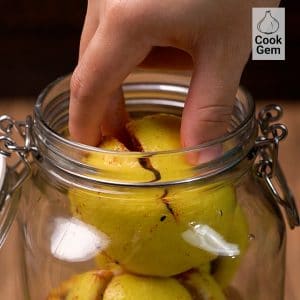
- Cover the jar and give it a little shake to make sure the seasoning is evenly dispersed.
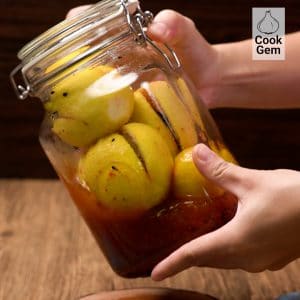
- Let the lemon ferment at room temperature out of the sun for at least two weeks. Give it a turn upside down or a good shake every few days.
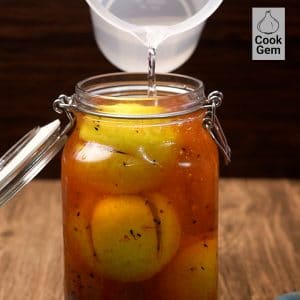
- After two weeks, you should move the lemon to the fridge (especially if you have opened it).
- Enjoy!
Video
Nutrition
Back when I was a kid, my mom used to preserve lots of food. She even made her own jam with fruit from her garden. I’ve grown up being quite familiar with the process of canning and storing food, but I never thought to do it with lemons until recently. If this recipe intrigues you and you want to explore canning in more depth, here’s a handy-dandy canning guide to answer all your questions.
When I buy lemons, I usually need more than one or two, but not as much as an entire bag so I often end up with spoiled lemons in my fridge. Since I decided to preserve all my leftover lemons, I’ve never had that issue!
There are several ways to go about preserving lemons, but this recipe is Egyptian style. If you want something with a different taste, try sweet and sour canned lemon pickle.
For this recipe, you only need 4 ingredients (plus water), so it is easy to make. This is quick to prep, but you will need to let the lemons sit and ferment for two weeks. Make sure to keep that in mind if you are using this for any specific dish.
Notes & Tips
- After the two-week fermentation period, the lemons can be stored in the fridge for up to a month.
- If you want to make a large batch of preserved lemons but don’t want them to spoil, there is a different method you can use, but it is not quite as tasty. To preserve lemons for a year or so, cut them into quarters and pack them in sterilized jars with loads of salt. Store in a cool dry place for at least 3 months. Rinse the salt off the lemons before serving.
- The longer storage method does not use other spices but it does use a lot of salt. If you choose this method, it is vital that you completely coat the lemons with salt and keep them packed in salt during storage, even if you have to open the jar and add more periodically.
Serving Suggestions
Now that you have preserved lemons, you might realize you’re not sure what to do with them. If you are looking for ideas, look no further!
Egyptian preserved lemons (or any preserved lemons) are a tasty addition to steamed rice. I eat rice all the time with different toppings because it’s so easy. Just scoop up some jasmine rice, chop up some preserved lemon, and throw it all in a bowl. Spoon a little of the lemon liquid over as well and maybe add some fried chicken or tofu. Super easy and super yummy.
Chop up some lemon and add it to salsa for a unique dip.
Egyptian preserved lemon is also a great cocktail ingredient. Muddle it together with some gin and vermouth for an exotic martini or drop a slice in a glass of whiskey to try something new.
What Is Safflower?
Safflower is a yellow flower that looks a bit like thistle. It is part of the sunflower family, which makes sense considering its bright color. Its most common use is in vegetable oil. The safflower seeds go through an extraction process to make cooking-grade vegetable oil.
Safflower is also a popular substitute for saffron. Saffron is the most expensive spice in the world due to the labor-intensive method of harvesting it and its finicky blossoming time. In contrast, safflower can thrive in a lot of different environments and, most importantly, is much easier to harvest than saffron. Because of that, dried safflower is more accessible and affordable. Its delightful yellow color can complement dishes just as well as saffron for a much lower price tag.
Even if you have never made or tried preserved lemons before, this recipe will be sure to get you hooked. The Egyptian flavor from nigella seeds and safflower make this version of preserved lemons a showstopper.
